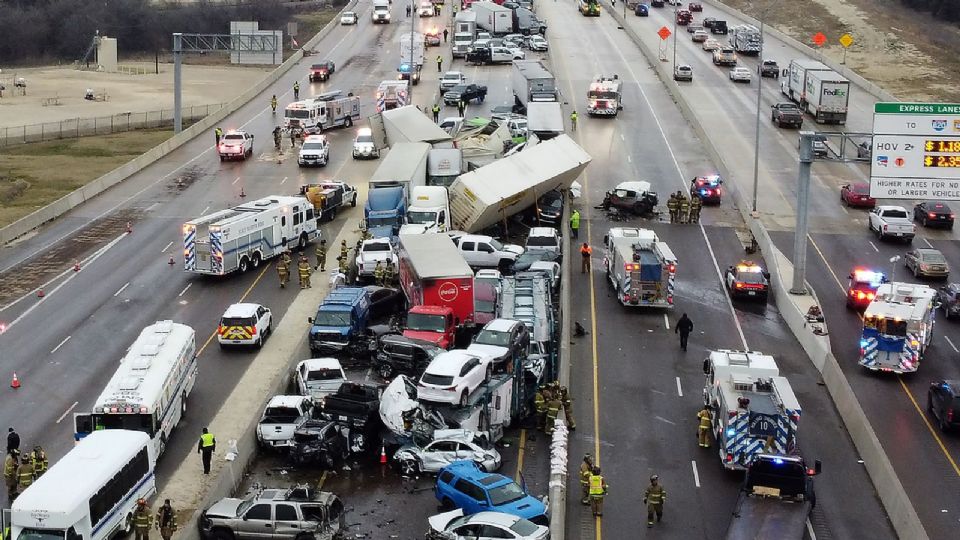
Every Winter Massive Wrecks Happen
Two years ago, one of the biggest truck accident/multi-vehicle wrecks happened on 1-35 just north of Fort Worth. With 133 vehicles involved, and six fatalities, the impacts have been felt far and wide.
Every year there are major wrecks involving multiple vehicles. Conditions get icy, visibility decreases, and motor vehicle drivers as well as truck drivers fail to take the conditions into account when they’re on the road.
The Car Crash Captain looks into what the regulations are for big rigs when road conditions are less than favorable.
What do the Regulations Say about Trucking in Inclement Weather?
Professional drivers – truckers; we’re not talking about racecar drivers here – are held to a much higher standard than the average driver on the road. They have certain rules that must be followed; if they aren’t, they can lose their license and in severe cases never be able to drive truck again.
While most truck drivers are great behind the wheel, there are plenty out there that simply lack the experience when it comes to driving on icy roads.
That’s why the government is very clear about the regulations for commercial vehicles. There’s an entire subsection about what to do when road conditions are dangers. If visibility or traction are reduced, you know the two major factors in these multi-vehicle crashes, then the driver may only operate the vehicle to the nearest point where safety is assured. In other words, pull over until conditions have improved.
You can read the law on the Code of Federal Regulations website, it’s only a few sentences long and, unlike many other laws, is easy to read.
Who is Liable in a Multi-Vehicle Crash?
That begs the question, if the driver didn’t pull over when required, does that mean the trucker is at fault for this massive wreck? Assuming they were the first ones to crash.
The answer isn’t quite that simple. There are so many factors that go into the wreck, the subsequent crashes, and more. Whoever is in charge of the roads might be partially to blame for failure to maintain, every driver might be to blame for driving too fast, the first vehicle might be to blame for causing the chain reaction.
We recently talked about multi-vehicle wrecks, so head over to that page for the full details on what’s going on in a pile-up.
How can Motorists Protect Themselves?
Regardless of who is at fault, avoidance is always the best option. How do we do that? Is it even possible? There are a few ways to protect yourself from a nasty wreck.
- Maintain your vehicle; make sure your tires are in good condition.
- Maintain your driving; make sure you know how to drive in inclement weather.
- Avoid driving; if you don’t absolutely have to drive, don’t.
- Take an alternate route; side streets might be slower, but speed kills.
- Be aware; know what’s coming up at all times so you have a chance to react.
Many of the wrecks can be avoided by slowing down or skipping the drive. Know your limits, and know that many other motorists have lesser driving skills than you do.
Herbert Law Group Helps Truck Accident Victims
No matter how well we drive, accidents happen. We can, after all, only control our vehicle and our actions.
If you were injured in an accident with a truck driver, or if a loved one was killed in a truck accident, you will need a truck accident lawyer to ensure that you’re fully compensated for what happened.
That’s where Herbert Law Group comes in. We have seen a lot of wrecks over the years, and we know what needs to happen to help you heal completely.
Call us at 214-414-3808, or fill out the contact form on our site, and we’ll be in touch to find out just how we can help.